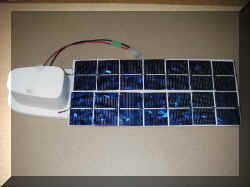 |
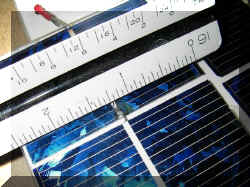 |
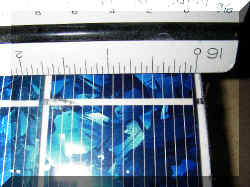 |
| This home-made panel has a rigid base of
1/8" PVC with 14 multi-crystalline cells wired in series and taped in
place. The panel is 5-1/4" x 12-1/4". The panel is covered with
.040" clear polycarbonate. |
Each cell is approximately 2-7/16"
wide |
by 1-5/8" high. |
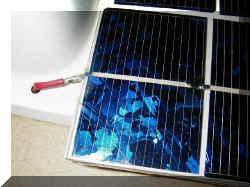 |
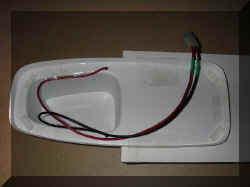 |
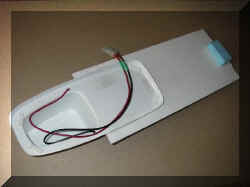 |
| Wired in series directly to the leads to
connect to the ESC (Electronic Speed Control) as a substitute for the
battery. |
Very low-tech application. 14 cells x .5
volts each = 7.0 volts. Any single solar cell produces approximately 1/2
volt. The voltage is constant. The amperage depends on the size of the
cell. Bigger cell = more current. |
This wire plugs into the ESC providing all
power to the model. No separate battery pack is needed. A small block of
foam supports the end of the panel to the stern of the boat. |
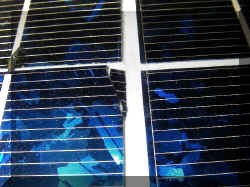 |
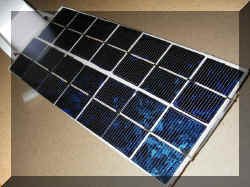 |
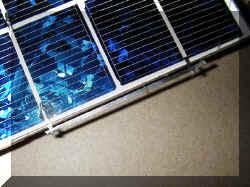 |
| Solar cells are like paper-thin sheets of
glass. They are fragile. They can be cut by scoring with the tip of a
carbide or diamond engraving tool. Score, then break, like cutting glass.
Work on a hard flat surface to support the cell while scoring &
breaking. |
These were originally 2-7/16" x
2-1/4" cells that I cut in half. I used muti-crystalline cells
because they were less expensive than mono- crystalline cells. They are
more fragile as well. |
The supplier sold this flat tinned tabbing
wire to connect the cells. This is the cross-connection at the end of the
two rows of cells. |
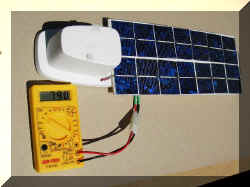 |
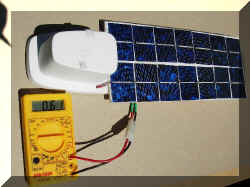 |
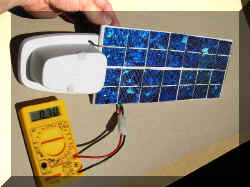 |
| Late morning sun shows 7.9 volts
open-circuit. |
Shorted circuit shows 0.61 amps available.
This panel runs the boat best when the sun is overhead. |
Tilt the panel a few degrees to point
directly at the sun and you get 0.70 amps. I will get more amperage if I
remove the cover or used a space-age non-reflective cover to reduce
reflected energy, allowing more solar energy to reach the cells. |
|
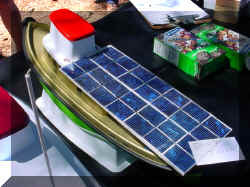 |
|
|
I was a little nervous with this
application as the panel hangs off of the rear of the tug. A hard impact
with another boat could damage it. I have considered raising it up and
moving it forward like a canopy. |
|
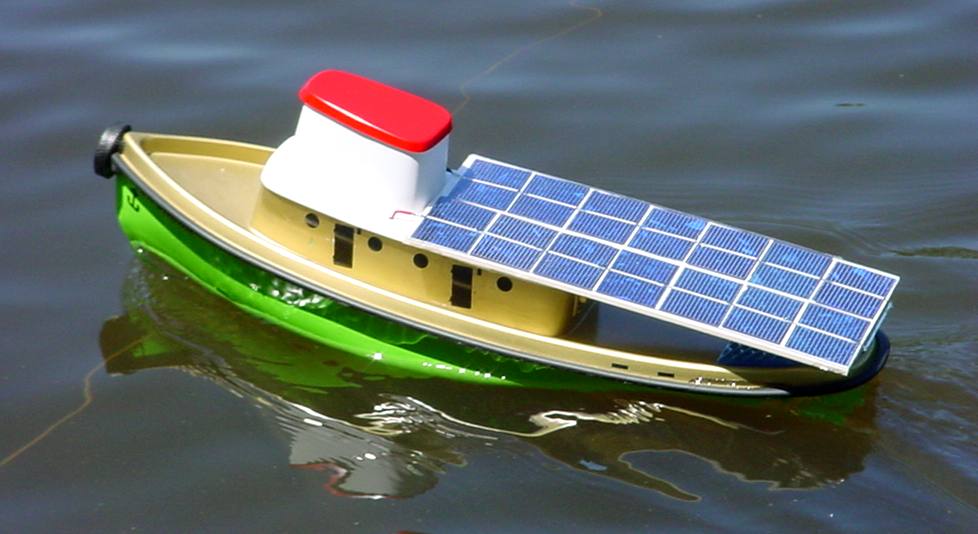













 TM
TM